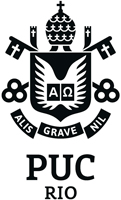The Impact of Monetary Policy on Asset Prices: A High-Frequency Approach for Brazil
In this paper we study the impact of monetary surprises on a class of asset prices in the Brazilian financial market. Due to institutional factors that prevent identification of this impact through the association between the monetary surprise and asset price movements in short windows around monetary policy announcements, we use an event study framework at daily frequency, controlling for both domestic and foreign factors that may affect the asset prices under analysis. We find that a surprise monetary tightening has a strong negative impact on stock market returns, and its effect on the yield curve is positive and hump-shaped, reaching a maximum on the 6 months yield. Unlike most of the previous literature focused on Brazil, we find that the Brazilian Real appreciates in response to this monetary tightening, which is consistent with the reactions found for currencies of developed economies. Moreover, while we obtain a regime in which the exchange rate is irresponsive to the monetary surprise, the evidence supporting a fiscal cause behind this regime is not strong.
Thomás Gleizer Feibert.
Orientador: Márcio Garcia.
Co-orientador: Carlos Viana de Carvalho.
Banca: Eduardo Zilberman. Bernardo Vasconcellos Guimarães.

